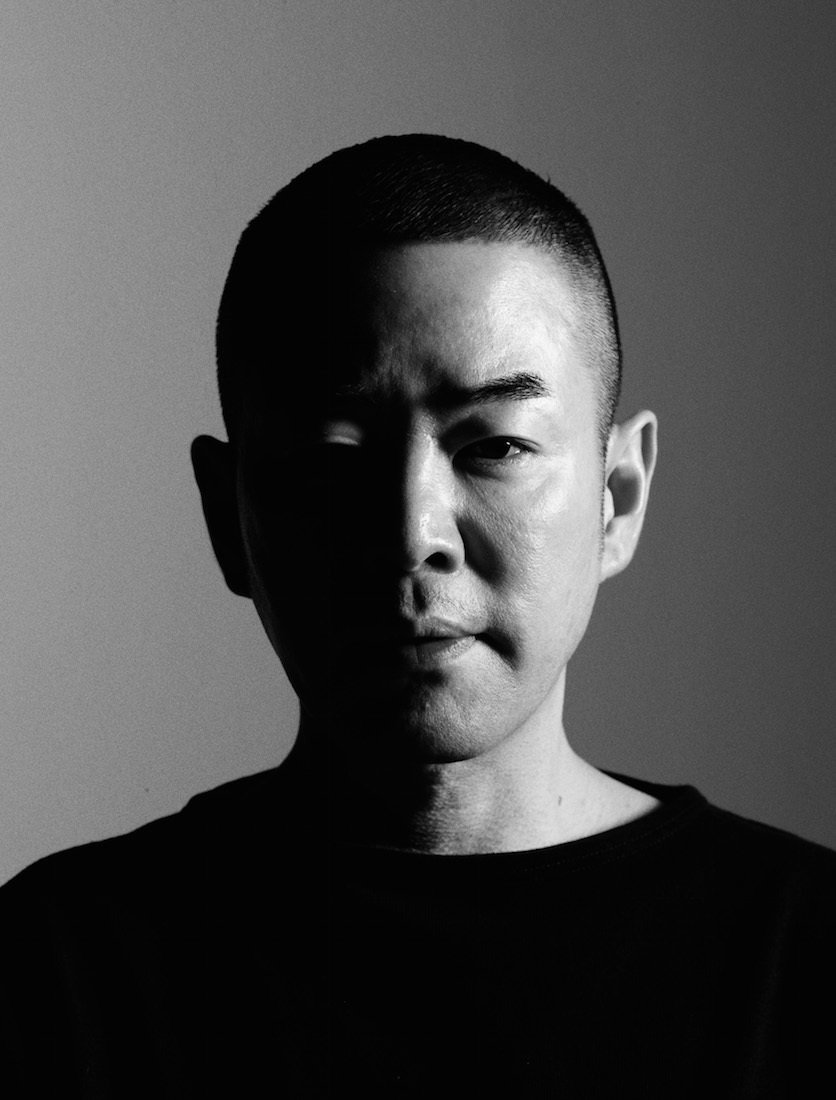Korean designer Jung Wook Jun is the mind behind the rising menswear label Juun.J. Having graduated from ESMOD Seoul in 1992, where he transferred from art school, he created his own label (Lone Costume) in 1999, which walked at Seoul Fashion Week and gained a loyal following. By 2007, Juun.J re-christened his label and shifted to Europe, unveiling his looks — notably the re-imagined, deconstructed trench — to the global market during Paris Men’s Fashion Week in 2007.
He’s similarly infused such experimentation into turned-out topcoats, wide-legged trousers, and sumptuous parkas. Juxtaposing street culture with classicism, sportswear with military, tailored precision with architectural exaggeration, he’s perpetually combining statement silhouettes with fine detailing. Plus, Juun.J’s approach to sartorial masculinity implements a gender-flexible approach. His unisex attitude has even been emblazoned on his garments, most recently in his show at Pitti Uomo 89 in Florence, where he was the first-ever featured Korean designer. Jackets and pants repeatedly stated in all caps: GENDERLESS, BOUNDARYLESS.
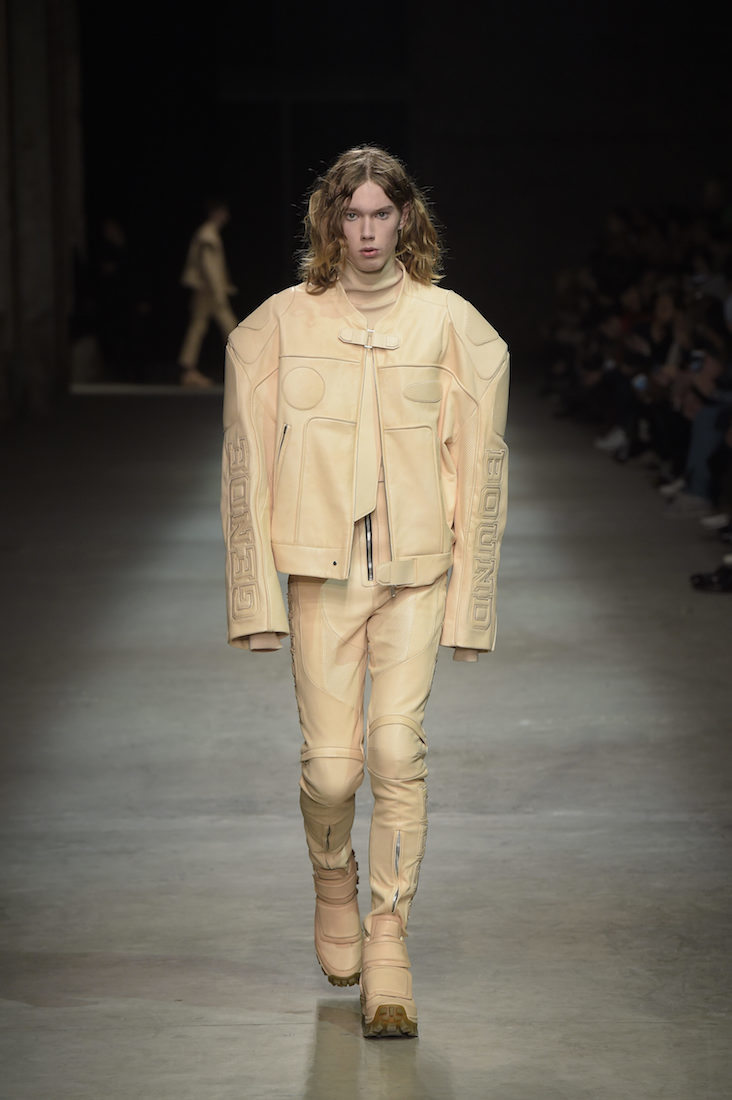
By way of his translator, the designer discussed his experience as a centerpiece at Pitti Uomo, how he’s been growing into his bolder designs, and his great delight at the rise of unisex fashion.
What did being in Florence bring, in terms of new dynamism?
The first time I heard the news, in October, I was extremely happy, because it’s like the mecca of the men’s world of fashion. Being in the spotlight for 2016 feels like getting to the next level. People are looking specifically at Juun.J as a brand itself, not just as part of menswear more generally.
Also, the space [at the Stazione Leopolda, a huge 19th-century former railway station] was so perfect with my designs. In Florence, I was inspired by the leather and made a lot of leather pieces for this collection.
You’ve otherwise been showing at Paris Fashion Week. How has showing in Paris shifted for you over the course of those years?
Paris is the hub of the fashion world. All the buyers come to the show. The big difference is: less restraint. I can be myself, I can show my creativity. I know I have an audience who understands it. When I showed my collection in Asia, Asians are a little bit reserved, and were always asking if it was too much. Being in Paris has given me more confidence.
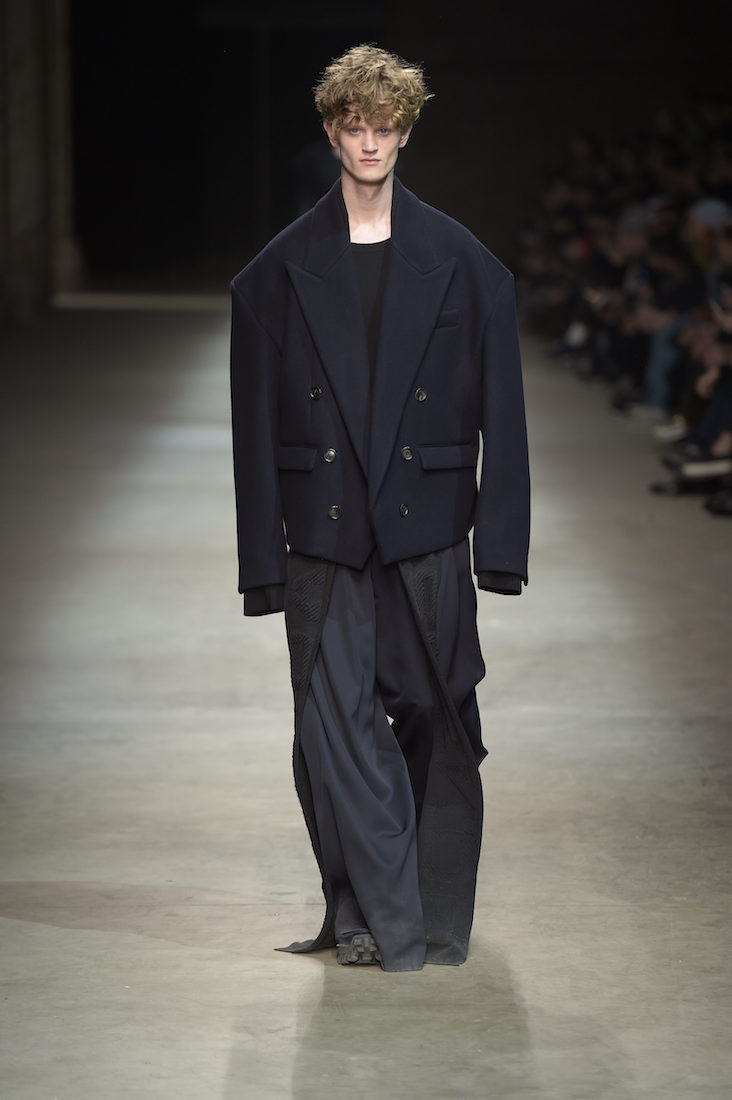
You’ve been talking about the genderless/unisex concept of fashion for a long time, well ahead of the curve. Now the topic is everywhere. Does that make you situate yourself any differently?
I’m even happier, actually. I’ve been talking about genderless for many, many years; it works with my future-looking vision at what’s coming. I think this is my opportunity now, because more people know about genderless—I don’t have to work so hard to explain what I’m trying to achieve with my designs. Because of that, for this Pitti, I felt like I could be who I am even more. I could be bolder, even more oversized in structure. I had hesitations… about what people would be accepting of, but this time, I was a little bit free. I could show everything I like to do.
As someone who knows a thing or two about making genderless clothes, do you feel there are any other designers that are doing it well?
Raf Simons. His collections are never the same; I admire that. I want to reinvent with every collection.
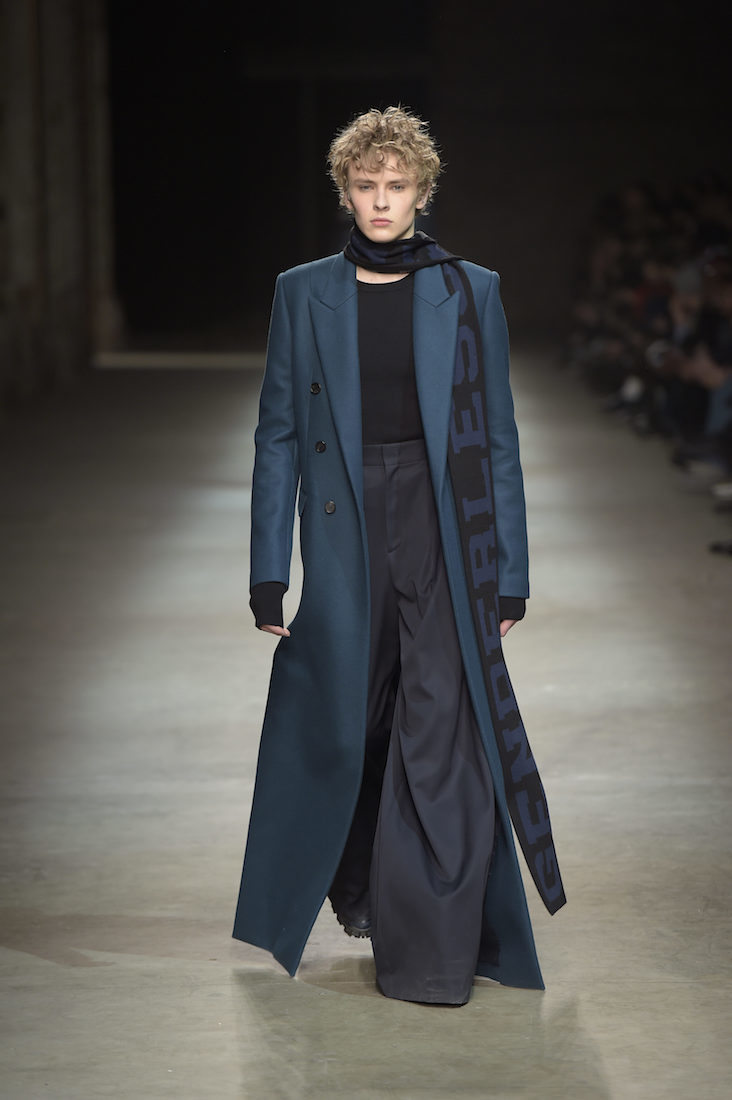
What’s the process of working out proportions?
When I start preparing the collection, I think about the concept first; then comes the silhouette. But oversized patterns and designs are combined with slim silhouettes, for balance.
You collaborate with artists and graphic designers: Italian digital painter Paolo Pedroni, Russian mixed media artist Oleg Dou, American letterform/sign painter Josh Luke. What is that collaboration process like?
Collaborating with artists is a part of Juun.J’s identity. With my own art background, I can design graphics, but I’m not an expert. I’m an expert in fashion. So if I bring my expertise, and another person’s art expertise, it’s a better outcome: the best of two worlds.
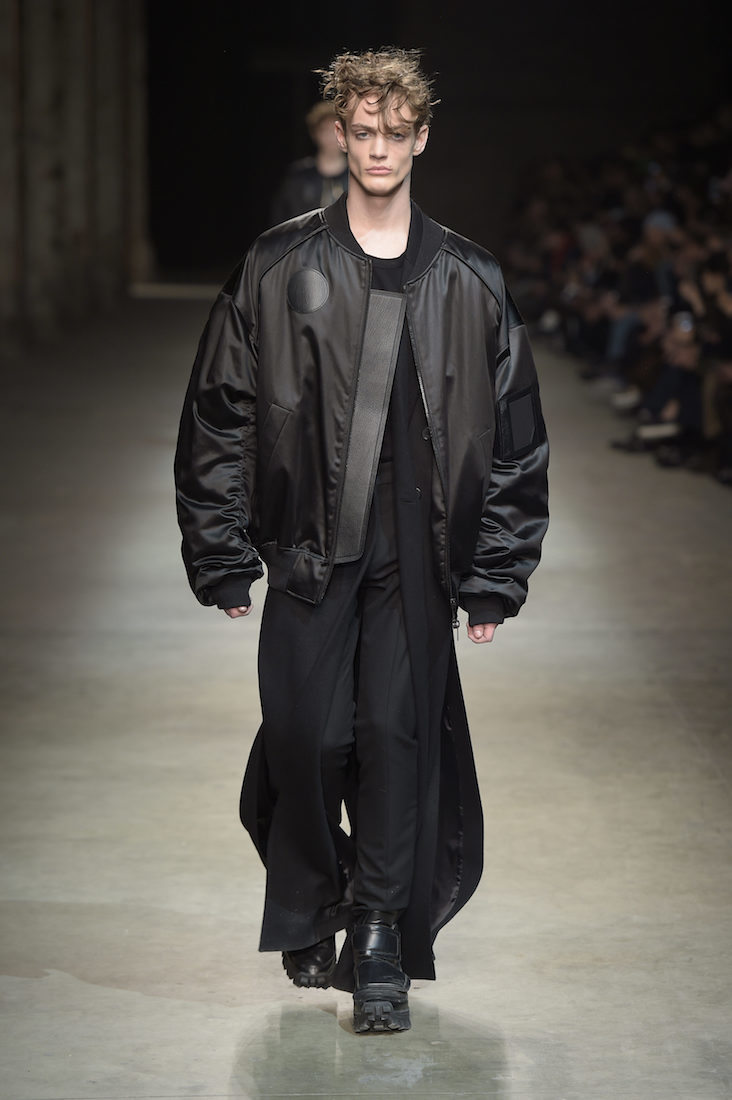
Are there artists you haven’t worked with that you’d like to?
Right now I’m only at two-dimensional… but maybe I’d go 3-D with Jeff Koons!
Can you tell me about your favorite items presented at the Pitti show?
The first look, an oversized rider jacket, is a favorite. As the leather ages, the color changes and will brown. There are a lot: the rider bolero. The maxi very long oversized coat, and the oversized-shoulder peacoat-but-it’s-not-a-peacoat. Club scarves. The pinstriped suit with the atypical menswear stripe — it’s a little bit wider apart. The iconic bomber. The shearling and wool detachments, creating different looks for a single coat.
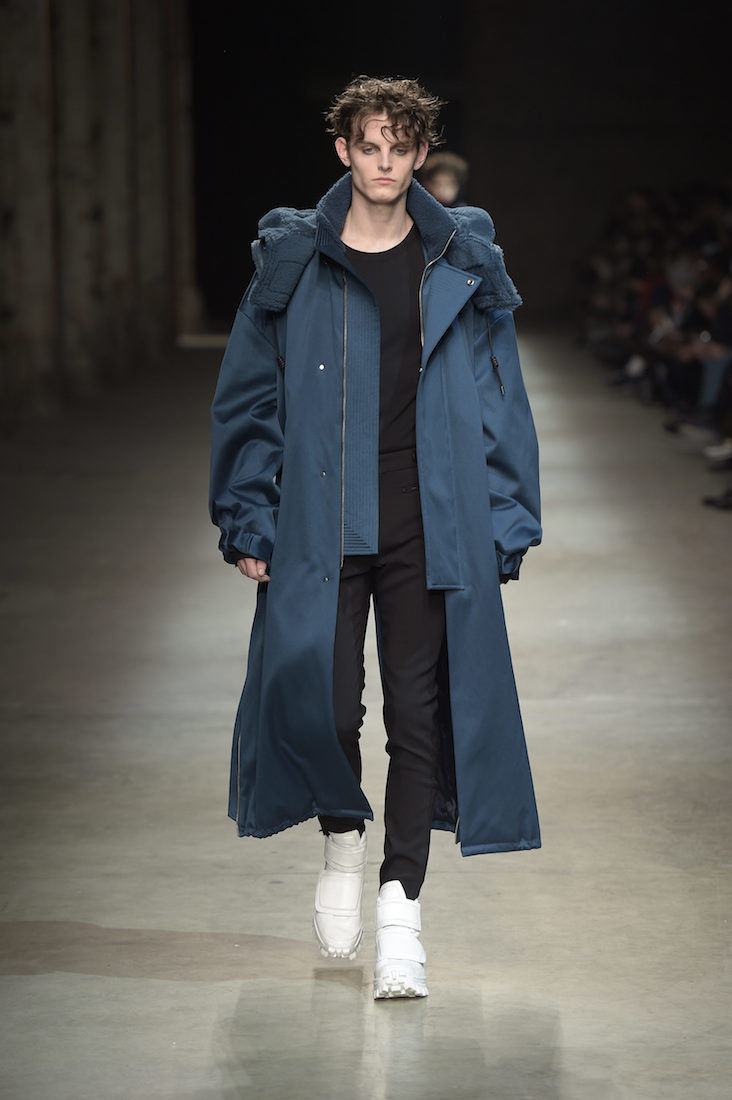
At the finale of the Pitti Show, the models all came out in those.
For every show, I have the same finale: all the models do the final walk wearing the same clothes, which haven’t been seen with previous looks. This time was the shearling coat with the Hajime Sorayama art. It’s inspired by the army: everyone in the same uniform, marching.
Credits
Text Sarah Moroz`
Runway photography courtesy Juun.J
